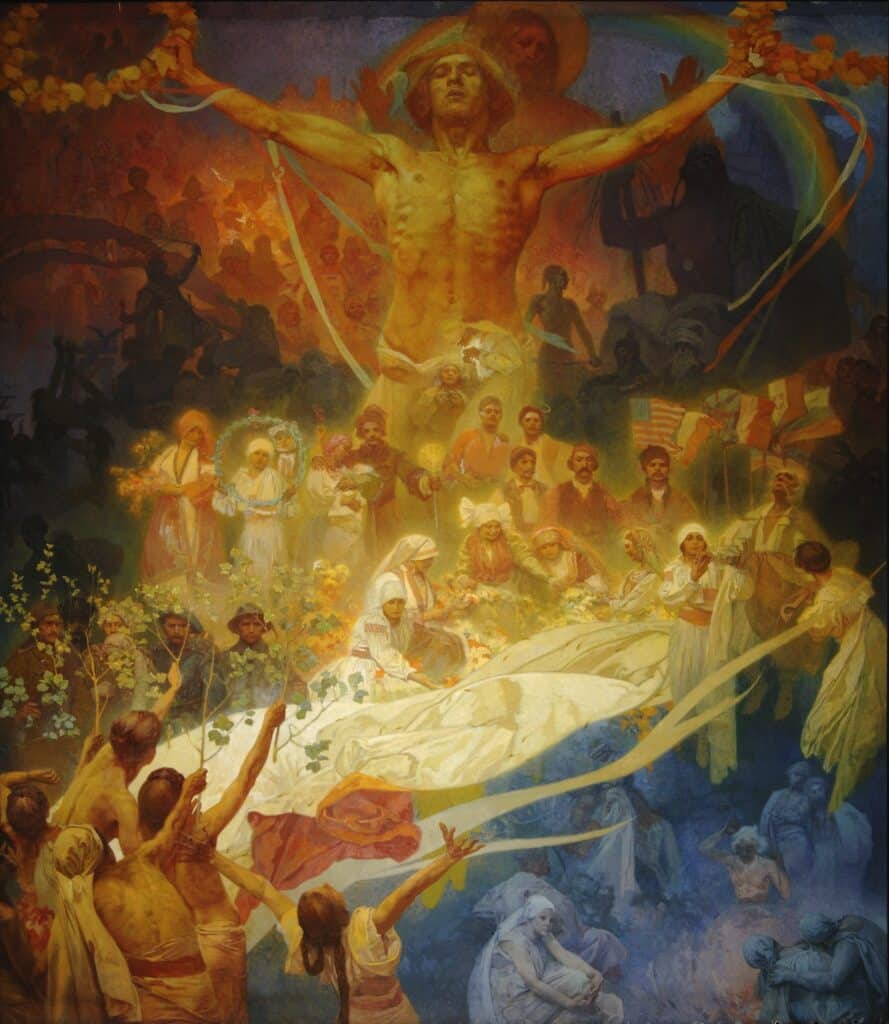Four Periods of Slavicity in Four Colours
The last picture summarises the history of the Slavs and the whole Slavic epic, divided into four colours.
On the bottom right is the colour blue - it symbolizes the ancient times and the Slavs in their homeland, a time when they worshipped pagan gods. The blue depicts a reaper (Old Slavic priest) presenting a burnt offering to the gods.
In the upper third of the painting is the colour red, which commemorates famous moments in Slavic history - the most important Czech rulers - Přemysl Otakar II, Charles IV and the last Czech king George of Poděbrady. The reforming ideas of Jan Hus and the success of the Hussite movement.
Under the red is the colour black, which symbolises the lost battles and the period of oppression of the Slavs - the raids of the Franks, Avars, Turks and also 300 years of oppression of the Czech language after the Battle of White Mountain.
The largest area of the painting is filled with yellow - the colour of joy and freedom. In 1918, World War I ended and after the collapse of Austria-Hungary many Slavic nations achieved freedom. At the bottom left, people greet legionnaires returning from abroad. Women in Slavic costumes weave garlands and prepare flags to celebrate independence. On the right, an old man thanks God that he has achieved freedom. Behind him are the flags of the victorious powers. On the left we see representatives of the Slavic nations.
The upper part of the painting is dominated by the figure of a Slavic young man who has his arms outstretched to show that he is finally free. In his hands he holds wreaths of victory and unity, on which the Czechoslovak tricolour is suspended. Behind him, Christ blesses all Slavic nations. The painting is topped by a rainbow, which symbolises the most important idea of the whole cycle of the Slavonic Epic, namely peace between the nations.
Vita App/gnews.cz-Jana Černá_07
https://mk-epopej-pruvodce.netlify.app/dospely/20



